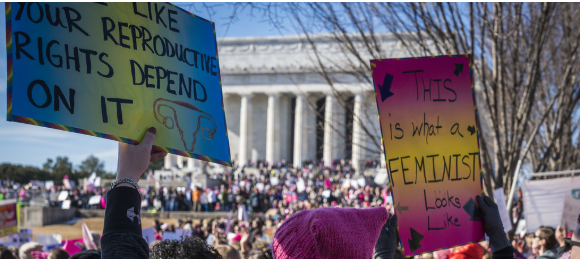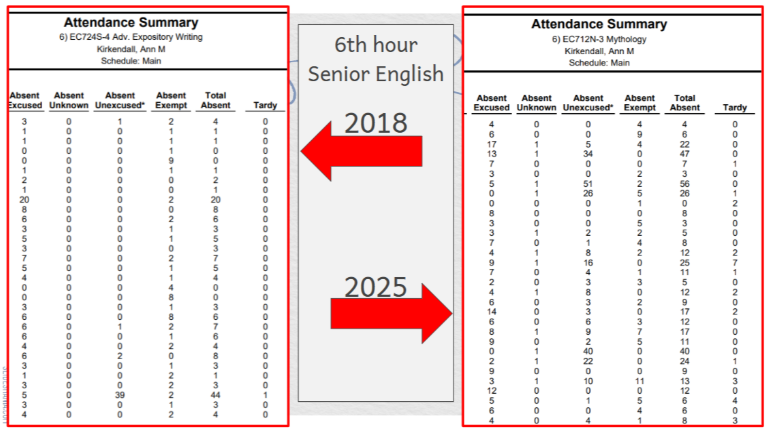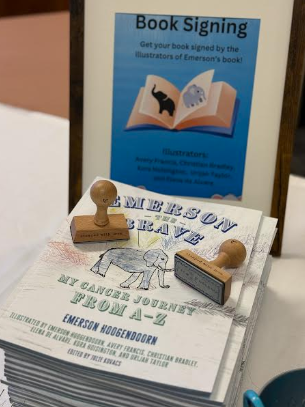The time: 2016. The place: a Hilton hotel in Midtown New York. The event: the election of Republican candidate Donald J. Trump. The shock of his election rippled across the country, especially since many were appalled by the comments made by Trump throughout his campaign, several of which were directed at women and minorities.
Many considered his election a step back in the fight for women’s equality, and it is obvious why. As a former owner of the Miss Universe Organization, President Trump has a history of demeaning and belittling women with his remarks. Adding to his poor reputation with women, Trump has been “accused of various forms of sexual misconduct by at least 22 women.” When Trump supporters cheered in triumph the early morning of November the 9th, the shoulders of his opponents sagged in defeat and dread.
And despite the numerous cases of using gendered and sexist language, his election and inauguration shocked countless Americans to their core. They had hoped voters would have the decency to deny the presidency to a man who brags about grabbing women by their genitals.
The Women’s March of 2017 came as little surprise to those outraged by the results of the election. Participants came in droves (with the total number between three million and five million people) waving protest signs and wearing pink hats with cat-like ears, nicknamed “pussy hats”: an ironic play on Trump’s choice of words in the Access Hollywood tape of 2005.
The protest was an angry outcry, a yell against the mistreatment of women, a trend perpetuated by newly inaugurated President Donald Trump.
Since the 2017 March, masses of people have gathered for repeated annual marches. “Women will not back down. Women are resilient and want their voices and opinions heard,” commented the office of Michigan Attorney General Dana Nessel, who spoke at the march in Lansing, “[These marches call] attention to issues that women are facing around the world. Without the march, these issues may never be brought to the table for a conversation.” With a president who is not keen on women’s equality, repeating the marches displays a sign of tenacity and determination. “Plain and simple, women are not going anywhere,” firmly stated Alisa Parker, an organizer for the Kalamazoo Women’s March.
“When you consider that it was only 100 years ago that women fought for the right to vote – and only 50-60 years ago was the large women’s movement push. However, here we are in 2020 – sexual harassment still as prevalent as evidenced by the #MeToo broad audience…,” said Marnie Pierce, a participant in the Saugatuck march.
The women’s movement has not been around long compared to “men’s rights.” The relative “newness” of the women’s movement makes the marches, repeated four consecutive times, that much more significant. “Women are more empowered to speak up,” observed Eleanor Bryant, an avid believer in women’s rights and equality. The #MeToo Movement, a hashtag originally circulating on MySpace in 2006, gained prominence and viral recognition in November of 2017 because of numerous sexual assault allegations against Harvey Weinstein.
Despite the initial reason for the march to protest the inauguration of Donald Trump, motives have evolved. “The atmosphere around the march has definitely evolved with current social issues, such as the rise of the #MeToo campaign, but at its core it is still a powerful way to mobilize and motivate women to show up, stand up and speak up,” responded Nessel’s office.
The purpose of the marches isn’t to possibly persuade the current administration to change, as Bryant stated, “President Trump needed to be . . . aware of these issues in the beginning years of his presidency,” but to allow women to speak out and share their voice and to affect future change. The Kalamazoo Women’s March was centered “around women of color who in the past have largely been left out of planning, although women of color have been leaders when it comes to voting and being leading voices in the women’s rights movements,” said Parker.
Reshaping the motivations for the demonstrations means inclusivity, which in turn leads to individuals identifying with the movement and joining the ranks. “I think the march is a personal thing to many. I am not someone who stands on a soapbox . . . the march [is a] small way I can express my view and encourage others to step outside their box,” attested Pierce.
“I would hope for representatives and senators who understand the issues facing our people have the courage to move for change,” stated Bryant.
So despite the lack of support at the Presidential level, advocates aim for changing the minds of other government officials.
Even with the impending election and the possible change of administrations (Republican to Democrat), Pierce wants the marches to continue. “The US was founded on our freedoms and every person having a voice in their vote,” she responded. “If a Democrat wins, I really hope the marches don’t stop.” A Democratic president would not be enough, “. . . we must continue to pursue solutions on several fronts including electing the appropriate legislators at the local, state and federal levels to ensure women’s rights are protected under law,” added Nessel’s office.
The main message: repeating the marches, no matter the political alignment of the president, is one of the most important ways to prompt change. “We hope that a culture shift is happening, that we begin to have a true equity focus in how we approach the work in the women’s rights movement,” said Parker.







